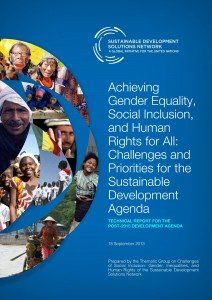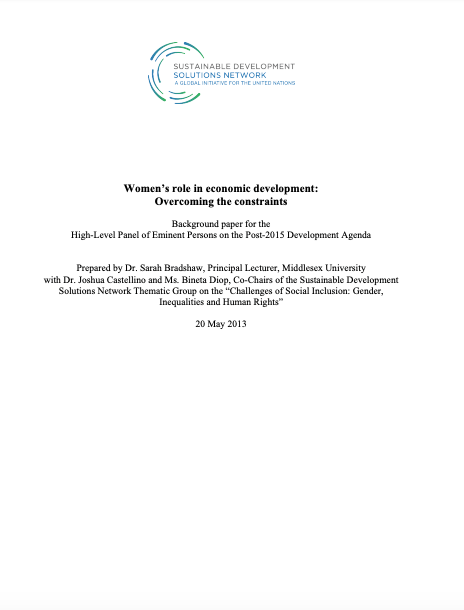1: Education, Gender, Inequality
Filters
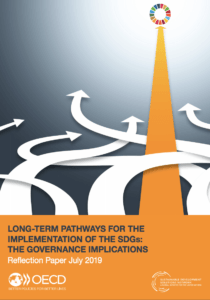
By jay
•
16 Jul, 2019
The 2030 Agenda and the Sustainable Development Goals adopted in 2015 are a universal plan of action for humankind. Yet, four years after their adoption many countries are not yet on track to meeting the SDGs by 2030. Independent assessments by the OECD (2019), SDSN (Sachs et al. 2018; Sachs et al. 2019), and others show that no country has achieved all SDGs. Trend analyses also suggest that no country is on track towards meeting all the goals by 2030. For many goals, particularly relating to social inclusion and environmental sustainability, some countries are actually moving further away from the targets. Meeting the SDGs will require sustained long-term investments and coherent policies. Transformations towards achieving the SDGs will require greater levels of public and private investments in all of the SDGs, including human capital (health and education), social protection, clean infrastructure and industry, urban management, and environmental protection (IPBES 2019; TWI2050 2018). Success will also require greater efficiency in investments and above all coherent policies and governance frameworks to ensure that the long-term goals can be met. Governments need to develop actionable strategies and leverage all available governance tools in order to reach the transformative goals of the 2030 agenda. Evidence shows a number of important steps to achieving these changes, in particular: translating the SDGs into quantitative, time-bound national objectives and benchmarks; devising long-term strategies for meeting them; and aligning policy frameworks and governance mechanisms with these strategies (OECD forthcoming, SDSN, 2015a). Whole-ofgovernment and whole-of-society approaches are key to building ownership for large-scale and long-term changes in areas such as governance, infrastructure, and technologies. Countries should define such transformations in ways that best help them achieve the SDGs considering local needs. As one example, the SDSN has proposed six broad SDG transformations (Sachs et al. 2019) (Annex 1). Countries may organize SDG implementation in other ways depending on their specific needs and context. This reflection paper explores how strategic design and public management practices and procedures can be leveraged to help achieve the long-term pathways towards the successful implementation of the SDGs.
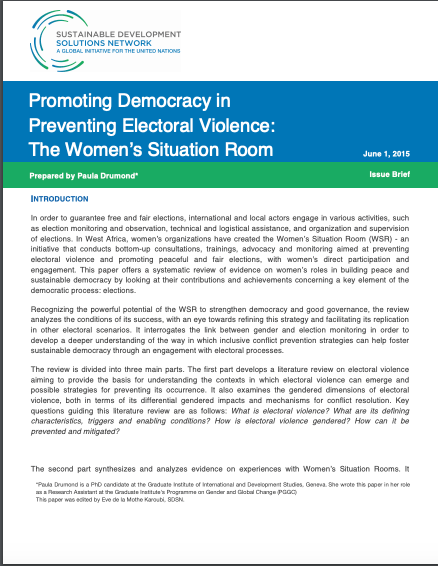
By jay
•
01 Jun, 2015
This paper offers a systematic review of evidence on women’s roles in building peace and sustainable democracy by looking at their contributions and achievements concerning a key element of the democratic process: elections. It presents a case study of the Women’s Situation Room (WSR) in Senegal – an initiative that conducts bottom-up consultations, trainings, advocacy and monitoring aimed at preventing electoral violence and promoting peaceful and fair elections, with women’s direct participation and engagement.
SIGN UP FOR SDSN UPDATES
Get our latest insights, opportunities to engage with our networks, and more.
SDSN mobilizes global scientific and technological exertise to promote practical solutions for sustainable development, including the implementation of the Sustainable Development Goals (SGDs) and the Paris Climate Agreement.
Paris
19 rue Bergère
75009 Paris
France
+33 (0) 1 84 86 06 60
New York
475 Riverside Drive
Suite 530
New York NY 10115 USA
+1 (212) 870-3920
Kuala Lumpur
Sunway University
Sunway City Kuala Lumpur
5 Jalan Universiti
Selangor 47500
Malaysia
+60 (3) 7491-8622
Designed by
Northeast Kingdom Online. Powered by
NEKO|360.

